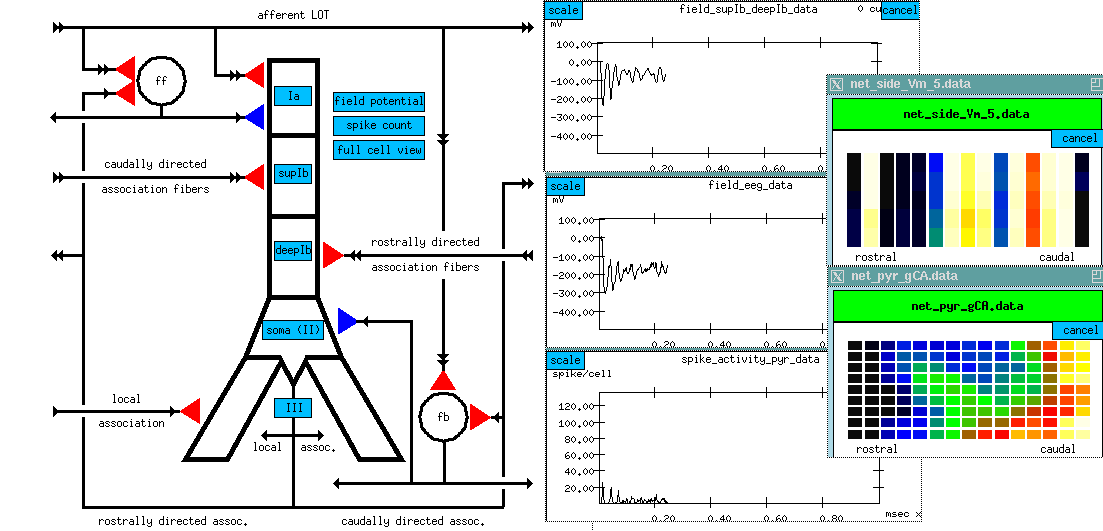
The Piriform simulation studies the dynamical properties of cortical networks. It was written by Alexander Protopapas and is a "user-friendly" version of the research simulation used by Wilson and Bower (1992) and Protopapas, et al. (1998) to model the processing of olfactory inputs to the piriform corex. This scaled-down version of the original GENESIS simulation uses 135 each of pyramidal cells, feedforward and feedback inhibitory interneurons, arranged in a 9 x 15 array. The use of this tutorial and the background for understanding it is provided in Chapter 9 of The Book of GENESIS.

The local connections in the piriform cortex model are shown in the neural circuit diagram at the left. Clicking the mouse on a given synapse in the diagram brings up a menu for changing the synaptic weight and time constant. The mouse is also used to select various modes of displaying the simulation results.
In the simulation results shown here, the upper graph has been used to display the superimposed field potentials due to the synaptic currents in the supIb and deepIb layers. The middle graph shows the simulated full field EEG pattern. The lower graph shows the spike activity in the pyramidal cells as a function of time. This is useful in correlating the activity of a particular cell type with the EEG pattern.
The colored columns at the upper right may be used to represent the activity (membrane potential, synaptic conductance, or transmembrane current) in each compartment of a row of pyramidal cells. Here we are seeing a view of membrane potential in the 15 cells of row 5 of the network. The network display at the lower right has been selected to represent the synaptic conductances in the supIb layer. These arise from the caudally directed association fibers. Here we see a wave of activity propagating from rostral to caudal. this activity was provoked by random input from the LOT and has a frequency of about 40hz.